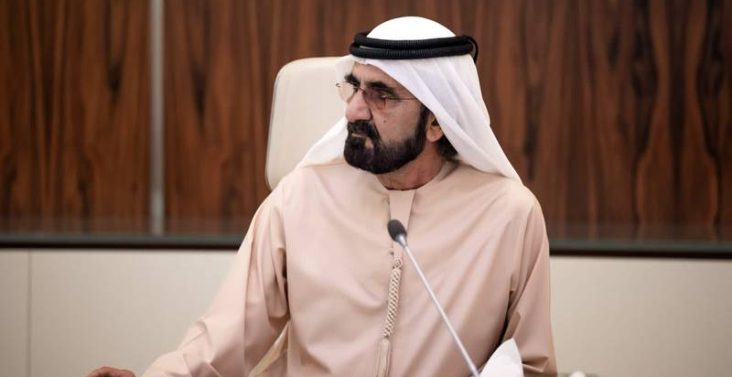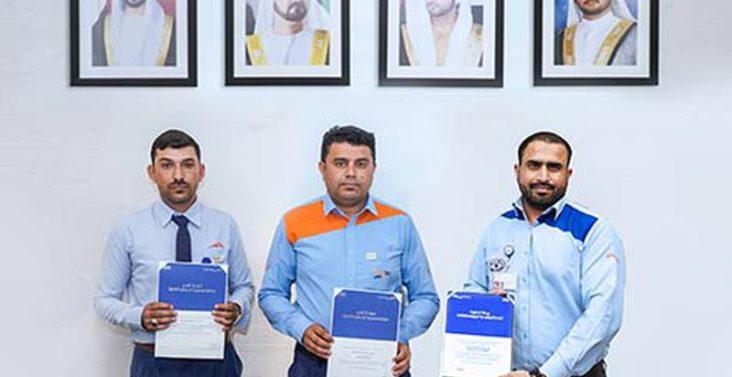SHARM EL-SHEIKH, Egypt — A government official, a representative from an international Non Governmental Organization and a contractor walk into a village.
That was the premise of a skit performed at COP27 in Egypt Tuesday, but for the actors telling how even climate adaptations intended to empower women are failing to bridge a gender gap in climate action, the subject was no joke.
For some, the fact that the issue had to be addressed with a skit illustrated how gender issues are not getting the attention they need on the main stages at the COP and elsewhere in global climate initiatives.
Of the 110 heads of state and government who have gathered at COP27, only seven are women.
Even as scientists, policymakers and other stakeholders agree that climate change impacts women far more gravely than men, this understanding has not informed local, national, regional or global policy at the rate that is required to effectively address climate change, Ko Barrett, vice chair of the Intergovernmental Panel on Climate Change, told Inside Climate News.
“It’s not moving fast enough,” she said.
Ignoring women’s significance in addressing climate change will severely undermine the progress required to tackle the existential crisis facing humanity, she said. “It’s no longer about greenhouse gasses, it’s about the world we are leaving for our children,” said Barrett. “Women play an incredible role in bringing that perspective to the conversation.”
In addition to the skit performed on Nov. 8 —Gender Day at the United Nations’ annual climate talks—lead authors and scientists from the Intergovernmental Panel on Climate Change have held a series of meetings and press conferences to share key findings on gender from the IPCC’s sixth assessment in 2021, including how poorly designed adaptation projects can escalate gender inequality and have unexpected consequences that are closely tied to the quality of women’s lives, such as negatively impacting water use and encroaching on natural ecosystems.
By amplifying the need for gender inclusive policies to address climate change, scientists, activists and policy makers are hoping to address existing gaps in climate action and governance.
“Successful examples of integrating gender in climate policies remain rare,” said Juan C. Monterrey, vice chair of the United Nations Framework Convention on Climate Change’s body focused on implementation, during a program considering the gender related aspects of the sixth assessment.
One of the biggest challenges so far has been getting a diverse pool of women to rooms where decisions on climate change are made, even before countries gather for international negotiations, said Barrett. “Often at a national level you don’t see that kind of gender equality,” she said.
Women Suffer More From Climate Change, and Lead More Effectively to Slow It
A 2019 study found that increased participation of women in parliaments led to the adoption of more robust climate policies and reduced carbon emissions. The “Chipko” movement of the 1970s, which involved actual tree hugging and is regarded as one of the most significant forest protection movements in modern history, was led by women in Himalayan region in India whose lives and livelihoods depended on woodlands. They spearheaded a movement of marches, protests and fasting to block in the forest where they live. And in 2018 Swedish environmental activist Greta Thunberg was only 15 years old when she sat in front of the parliament to challenge world leaders into taking action for climate change, inspiring Fridays for Future, a global, youth-led international organization that is currently operating in 7,500 cities where every Friday, young people march for climate action.
Women account for roughly 50 percent of the world’s population and more than half of the farm workers in developing countries.
Women are 14 times more likely than men to die in a climate catastrophe, according to the United Nations Development Programme, and the U.N. Environment Programme estimates that roughly 80 percent of the people displaced by climate are female. Environmental degradation, whether it occurs suddenly or slowly, diminishes access to food, drinking water, sanitation and education more for women than men.
This year, heatwaves in South Asia put female farmworkers at extreme risk of adverse health impacts and more than 1 million women in Pakistan needed immediate assistance after floods ravaged one-third of the country, according to the United Nations Office for the Coordination of Humanitarian Affairs.
In the Horn of Africa, drought driven by climate change stressed families and left young girls more vulnerable to being married off when they were as young as 12. Girls in families with low incomes are twice as likely to be married before they turn 18. And the IPCC’s sixth assessment report found that warming of more than 1.5 degrees Celsius is likely to push millions of families across the world into extreme poverty, significantly exacerbating the risk of child marriages in undeveloped countries.
Uganda’s National Adaptation Programme of Action anticipates that increasing environmental risks and climate-driven disasters will push more young girls into arranged marriages as families lose resources and child bride prices incentivize an increasing number of families to marry off their daughters. In Ethiopia, one of the countries most affected by drought, the United Nations International Children’s Emergency Fund found that child marriage has more than doubled over the course of a year.
At 1.5 degrees Celsius of warming, women and children will be among the populations most at risk of heat related morbidity and mortality, the IPCC’s sixth assessment found. Impacts on women in the aftermath of climate induced disasters are often regionally specific and connected to societal norms, such as the fact that women are not allowed to learn how to swim in certain cultures. That’s led to drowning, which is one of the leading causes of death when water related natural disasters strike, killing more women than men.
“Social prejudice against women learning to swim drastically reduces female survival opportunities in flooding,” said Antoinette Vermilye, co-founder of She Changes Climate, an advocacy organization that pushes for more gender representation in leadership teams for governments and businesses around the world.
Christina Fonfe founded the Sri Lanka Women’s Swimming Project after the 2004 tsunami that struck Indonesia and neighboring countries where over 80 percent of the more than 225,000 deaths were of women and children. That led Malini Mehra, an Indian climate campaigner and executive, to found Teach a Girl to Swim, a program to empower women and girls and push for better resilience to climate-driven floods and storms.
A Push For Female Leadership at the COP, and ‘More Women Across the Board’
In December 2020, Elise Buckle, Antoinette Vermilye and Bianca Pitt, founders of She Changes Climate, sent an open letter signed by more than 450 women to the U.K. government calling for more women on the presidency team of the next COP, which was held in Scotland. While the petition was well received and there was greater representation of women at COP26 than in earlier years, the numbers, She Changes Climate said, were not where they should have been. They continued their advocacy into this year’s COP27, where, Buckle said, “there’s more women than before but not nearly enough.” She Changes Climate is advocating for a female co-president of COP28, scheduled for 2023 in the United Arab Emirates.
“At the very least, we need gender balance in these rooms,” said Buckle.
Experts agree that equitable representation can’t just include the voices of women, but also must make room for more marginalized groups such as indigenous women, low-income women and women of the Global South.
Studying the intersections of gender, race and economic class to better inform mitigation and adaptation strategies is critical to achieving climate justice, the IPCC’s sixth assessment report concludes.
“A white, middle-class Canadian woman is impacted by climate change differently than a Malawi woman farmer,” said Rachel Bezner Kerr, a lead author on the report.
“It is about engaging and including diverse perspectives in our efforts to frame the issues and find innovative solutions,” said Barrett.
She notes that, since the IPCC was formed and released its first assessment report, its audience and reach has changed significantly. “It’s no longer academics sitting in their ivory towers.” As the audience for the reports changes, so does its approach and methodology. “There has been an increase in the number of social scientists over the years,” said Lisa Schipper, coordinating lead author of the IPCC sixth assessment report. The inclusion of social scientists in the IPCC’s process has amplified the need for incorporating gender justice in the climate change conversation. But how that is done is just as important as what is done, said Schipper.
Commonly implemented strategies to help women adapt to climate change, such as community engagement workshops for women and microfinance loans for female farmworkers, can isolate men from the conversation, she said.
“In a program in Peru this led to increased domestic violence,” said Schipper.
Such unintended consequences have led to the realization that men will have to be included in gender justice efforts, even if only in supporting roles, she added.
But researchers have also learned that empowering women in efforts to deal with climate change helps a range of underrepresented groups made up of both genders, said Chandni Singh, one of the lead authors of the IPCC sixth assessment report.
“The research has now moved to talking about how adaptation solutions that do not incorporate gender transformative policies tend to disadvantage vulnerable groups, including women,” Singh told Inside Climate News. The first step in addressing this problem and developing more gender-sensitive solutions to climate change is simply bringing more women to the table.
“If we are to sail the world, we can’t sail with an eye patch on,” Buckle said of efforts to navigate the climate crisis with the engagement of only one gender. “We need more women across the board.”
This story was produced as part of the 2022 Climate Change Media Partnership, a journalism fellowship organized by Internews’ Earth Journalism Network and the Stanley Center for Peace and Security.









